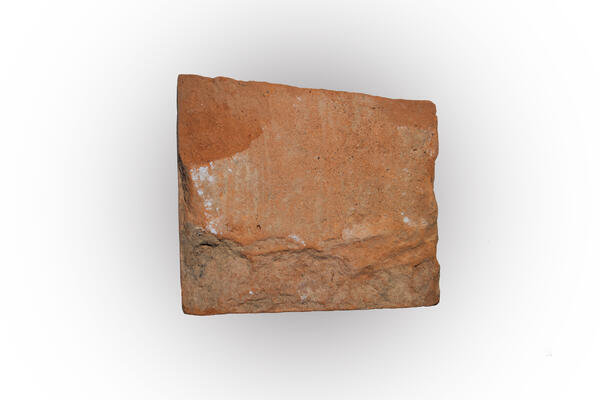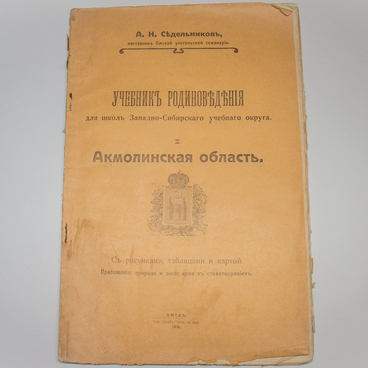This brick fragment was found during excavations of the destroyed Military Cathedral of Christ’s Resurrection which was on the territory of the second Omsk fortress.
The cathedral was laid in 1769. It was built by the brothers Kosma and Ivan Cherepanov from Tobolsk. Four years later, in the fall of 1773, the building was finished. An iconostasis was installed inside. In the same year, three first altars were consecrated in the name of St. Sergius of Radonezh, the Resurrection of Christ, and the Great Martyr Saint Catherine.
The artist Mikhail Vrubel was baptized in this cathedral. The writer Fyodor Dostoevsky visited him when he served a penal sentence in the Omsk prison. The priest and educator Stefan Znamensky, canonized by the Russian Orthodox church, served here. In 1891, the future emperor of all the Russias Nicholas II prayed in the cathedral, and in 1905, St. Righteous John of Kronstadt served Christian liturgy here.
After the Russian revolution, services in the cathedral ceased, and in 1958, it was decided to demolish it.
In 2009, archaeological excavations under the guide of Boris Konikov began. Their aim was to trace the site of the Military Cathedral of Christ’s Resurrection. The archaeologists managed to find the remains of the brick foundation and a part of a basement, as well as collect more than 2,500 artifacts of the 18th一20th century. There were 28 coins of different years, fragments of plaster interior details, glassware, and wrought nails among the finds.
The excavation materials and field documentation are kept in the Omsk Regional Museum of Fine Arts and Omsk State Museum of History and Regional Studies. In total, about 200 bricks with the stamps of local factories were discovered during excavations. The stamps were on the bedding (upper) part. Most of these bricks were made in Omsk. Old Omsk bricks had a free standard. Their length reached 27-30 centimeters, width ーfrom 14 to 16, and only their depth was always 7 centimeters. On the territory of the Military Cathedral of Christ’s Resurrection, square bricks, known as “lapti, ” were also found.
The cathedral was laid in 1769. It was built by the brothers Kosma and Ivan Cherepanov from Tobolsk. Four years later, in the fall of 1773, the building was finished. An iconostasis was installed inside. In the same year, three first altars were consecrated in the name of St. Sergius of Radonezh, the Resurrection of Christ, and the Great Martyr Saint Catherine.
The artist Mikhail Vrubel was baptized in this cathedral. The writer Fyodor Dostoevsky visited him when he served a penal sentence in the Omsk prison. The priest and educator Stefan Znamensky, canonized by the Russian Orthodox church, served here. In 1891, the future emperor of all the Russias Nicholas II prayed in the cathedral, and in 1905, St. Righteous John of Kronstadt served Christian liturgy here.
After the Russian revolution, services in the cathedral ceased, and in 1958, it was decided to demolish it.
In 2009, archaeological excavations under the guide of Boris Konikov began. Their aim was to trace the site of the Military Cathedral of Christ’s Resurrection. The archaeologists managed to find the remains of the brick foundation and a part of a basement, as well as collect more than 2,500 artifacts of the 18th一20th century. There were 28 coins of different years, fragments of plaster interior details, glassware, and wrought nails among the finds.
The excavation materials and field documentation are kept in the Omsk Regional Museum of Fine Arts and Omsk State Museum of History and Regional Studies. In total, about 200 bricks with the stamps of local factories were discovered during excavations. The stamps were on the bedding (upper) part. Most of these bricks were made in Omsk. Old Omsk bricks had a free standard. Their length reached 27-30 centimeters, width ーfrom 14 to 16, and only their depth was always 7 centimeters. On the territory of the Military Cathedral of Christ’s Resurrection, square bricks, known as “lapti, ” were also found.



